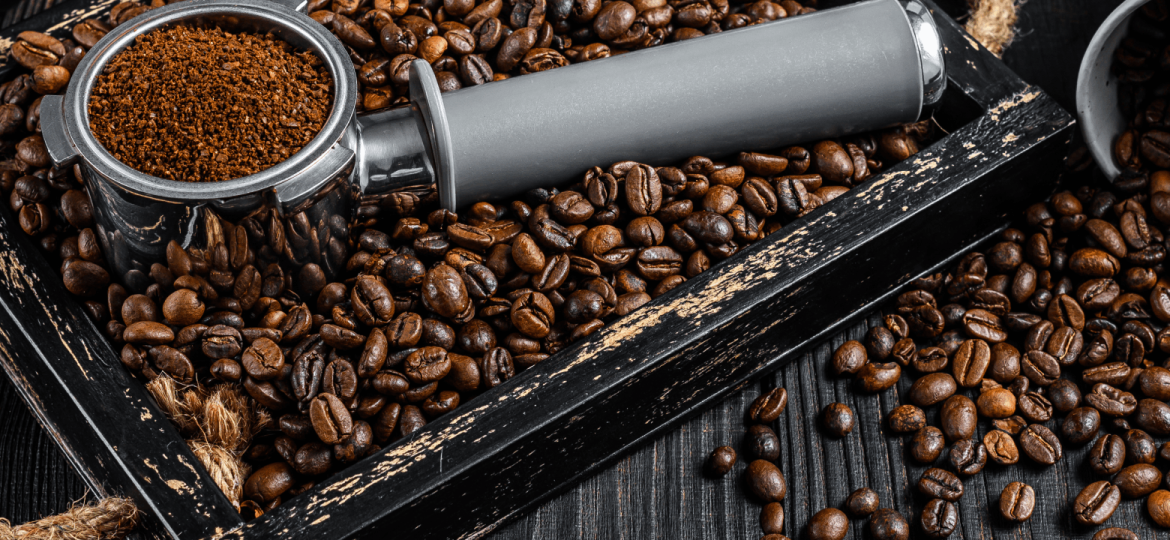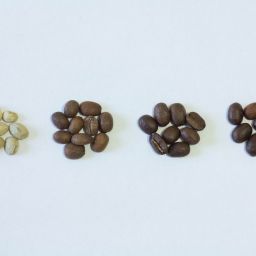
Arabica coffee beans are the world’s most popular coffee species, prized for their superior flavor and aroma. Originating from Ethiopia, these beans have found their way into the heart of coffee cultures around the globe.
Arabica accounts for about 60-70% of the world’s coffee production, favored for its smooth, complex flavor profiles that vary significantly from region to region.
Their global significance lies not only in their widespread consumption but also in their influence on coffee cultivation practices and economies in coffee-growing nations.
The Unique Qualities of Arabica Beans
Arabica beans are characterized by their oval shape and a curved crease. When roasted, they offer a range of flavors, from sweet and fruity to floral and nutty, making them highly sought after among coffee enthusiasts. The beans are typically grown at high altitudes in the equatorial regions, with each region imparting its unique flavor notes to the beans.
This diversity in taste and the beans’ lower caffeine content compared to Robusta species are why many prefer Arabica for their daily brew. The meticulous cultivation and processing required to maintain their quality further add to their appeal.
Top Arabica Coffee Brands and Blends
Renowned Arabica coffee brands like Illy, Volcanica, and Stumptown have set high standards in the coffee industry. Illy is celebrated for its rich and full-bodied coffee with notes of chocolate, caramel, and honey, showcasing the best of Arabica’s flavor potential.
Volcanica Coffee, known for sourcing beans from volcanic regions, offers unique blends that highlight the distinct terroir of their origins. Stumptown, with its focus on direct trade and quality, produces coffee that is both vibrant and complex. These brands stand out for their commitment to sustainability, quality, and showcasing the diverse flavors of Arabica beans.
The Art of Selecting Arabica Coffee Beans
Selecting the best Arabica beans involves looking at the bean’s appearance, understanding its origin, and knowing the roast profile. High-quality Arabica beans are uniform in size and color, indicating careful selection and processing.
The taste profile varies widely; beans from Africa might offer floral and fruity notes, while South American Arabica might be more nutty and chocolatey. The roast level, from light to dark, also affects the flavor, with lighter roasts preserving more of the bean’s original character.
Understanding these criteria can help coffee lovers choose beans that will best suit their taste preferences.
Read more about French Roast by Peet’S Coffee.
Best Practices for Brewing Arabica Coffee
To extract the best flavor from Arabica beans, consider the brewing method that suits the bean’s profile. For instance, pour-over techniques highlight the intricate flavors of single-origin Arabica beans, allowing for precise control over water temperature and brewing time. Using water just off the boil (around 195°F to 205°F) ensures optimal extraction without bitterness.
The grind size should match the brewing method—coarser for French press, medium for drip, and fine for espresso. Finally, fresh, soft water can make a significant difference in the taste of the brewed coffee, as hard water may interfere with flavor extraction.
The Role of Roasting in Arabica Bean Flavor
The roasting level of Arabica coffee beans greatly influences their flavor profile. Light roasts preserve the bean’s original character, offering brighter acidity and a complex flavor spectrum that can include floral, fruity, or herbal notes.
Medium roasts introduce a balanced body and sweetness, enhancing the coffee’s chocolatey and caramel notes, making it a versatile choice. Dark roasts, on the other hand, produce a robust body and a pronounced bitterness, with smoky or chocolaty flavors dominating, suitable for those who prefer a strong, bold cup.
Read more about Pros And Cons Of Dark Roast Coffee.
Pairing Food with Arabica Coffee
Arabica coffee pairs wonderfully with a variety of foods. Light roasts complement delicate flavors such as pastries, fruit, and light desserts, enhancing their sweetness.
Medium roasts go well with milk chocolate, nuts, and caramel desserts, bridging the gap between sweet and savory. Dark roasted Arabica, with its bold flavors, pairs well with rich desserts like dark chocolate and cheesecake or hearty breakfast items like bacon and eggs, providing a satisfying balance to the meal.
FAQs
- What is the best way to brew Arabica coffee? The optimal brewing method depends on personal preference and the bean’s roast level. Pour-over and Aeropress are great for highlighting complex flavors, while espresso extracts the rich and bold characteristics.
- How should Arabica coffee beans be stored? Keep them in an airtight container at room temperature, away from light, moisture, and strong odors. For best flavor, use within two weeks of roasting.
- Can Arabica beans be used for espresso? Yes, Arabica beans can produce a smooth, flavorful espresso, though they may yield less crema than Robusta.
- Is Arabica coffee stronger than Robusta? Arabica coffee generally has a more complex flavor profile but less caffeine than Robusta, making it less “strong” in terms of stimulant effect but richer in taste.
Read more about Rhoads Roast Coffee.
Conclusion
Arabica coffee beans offer a diverse and rich palette of flavors that cater to a wide range of coffee lovers. From the meticulous selection and roasting processes to the art of brewing and pairing with food, Arabica coffee stands out for its quality and versatility.
Whether you prefer a light, medium, or dark roast, there’s an Arabica coffee that fits every taste, making it a cherished choice among coffee connoisseurs worldwide.








